#duchess alexandrine of mecklenburg-strelitz
Explore tagged Tumblr posts
Text


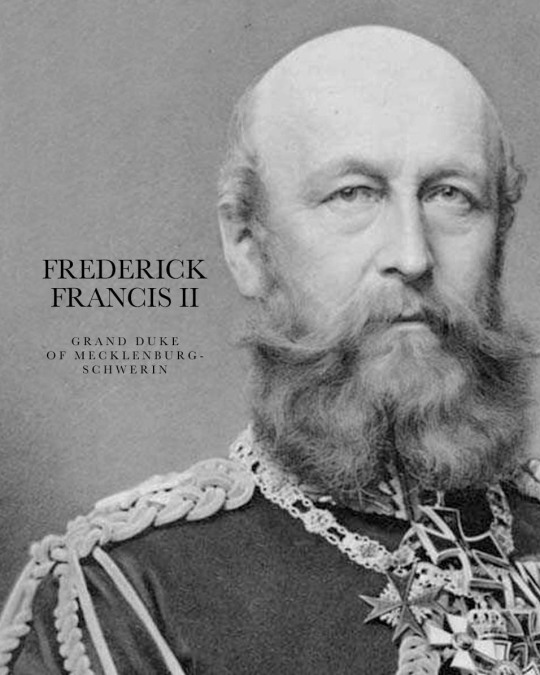
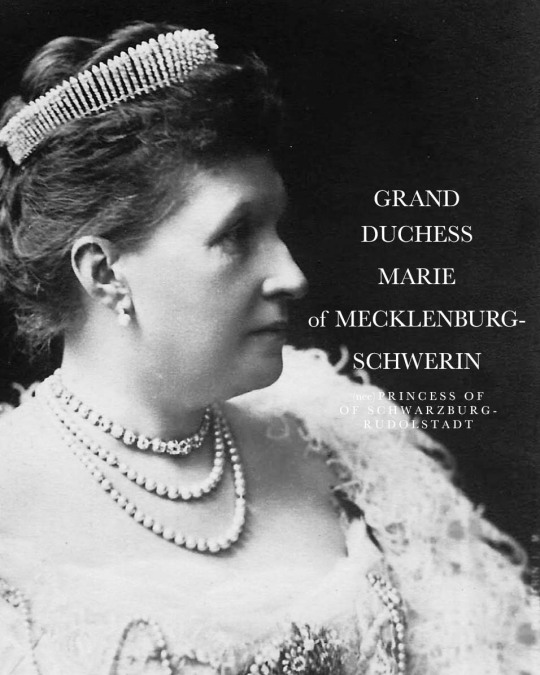
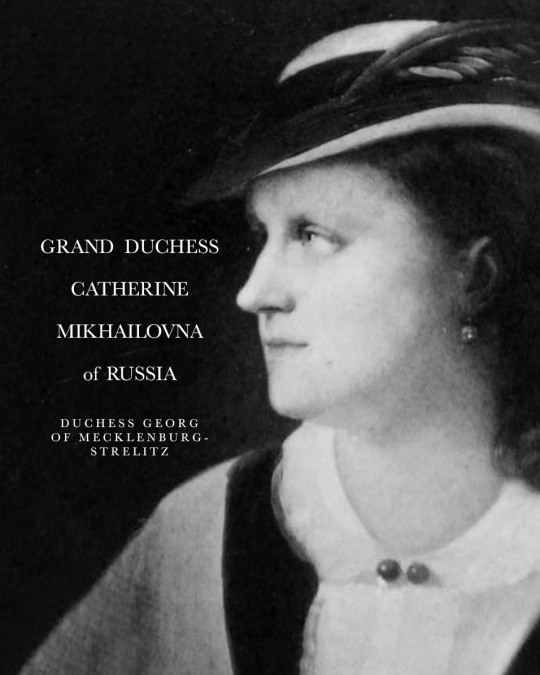
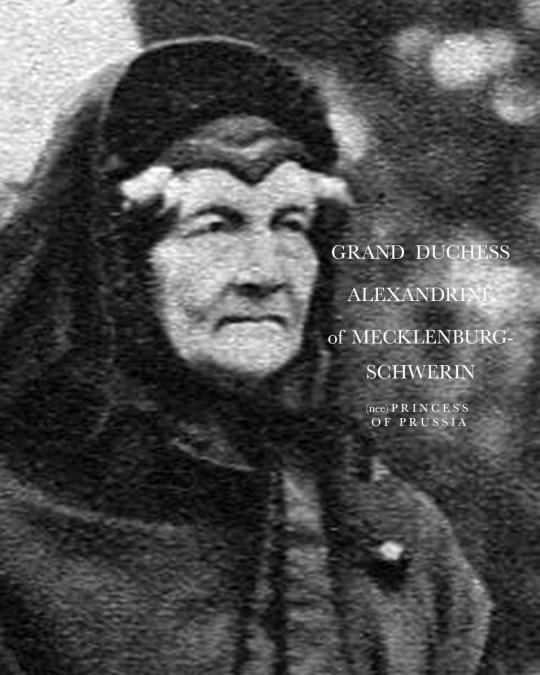
GODPARENTS OF GRAND DUCHESS ELENA VLADIMIROVNA
Grand Duchess Elena Vladimirovna, the youngest child and only daughter of Grand Duke Vladimir Alexandrovich of Russia and his German-born wife Grand Duchess Maria Pavlova (née Duchess of Mecklenburg-Schwerin), was born on 29 January (O.S. 17) 1882 in Saint Petersburg. She was christened on 12 March in the Grand Palace Church of Catherine Palace, Tsarskoe Selo. Her godparents were:
ALEXANDER III, EMPEROR OF RUSSIA - her paternal uncle, who had succeeded the Russian throne just a year prior, was named as one of her godparents. He was highly reactionary in domestic affairs and reversed some of the liberal reforms of his father, Alexander II. He was present at his niece's christening.
FREDERICK FRANCIS II, GRAND DUKE OF MECKLENBURG-SCHWERIN - her maternal grandfather was another of her godparents. A Romanov by descent (being a great-grandson of Tsar Paul), he held the rank of Prussian general and was also a Russian General Field Marshal.
MARIE, GRAND DUCHESS CONSORT OF MECKLENBURG-SCHWERIN - her step-grandmother was also named as her godparent. The third wife of Frederick Francis II, whose marriage produced four children, including Prince Hendrik, consort of Queen Wilhelmina of the Netherlands and father of Queen Juliana.
GRAND DUCHESS CATHERINE MIKHAILOVNA OF RUSSIA - A first cousin of her grandfather, Catherine was one of the two godparents present at her christening. She was the wife of Duke Georg August of Mecklenburg-Strelitz, and a great philanthropist and many of the organisations she supported and helped to create still operate today.
ALEXANDRINE, GRAND DUCHESS OF MECKLENBURG-SCHWERIN - her maternal great-grandmother, a Prussian-born princess was also her godparent. She was a sister of Empress Alexandra Feodorovna-consort of Nicholas I-who was Elena's great-grandmother on her father’s side. In 1822, she married Paul Frederick, Hereditary Grand Duke of Mecklenburg-Schwerin (himself, a grandson of Russian Tsar Paul). Their marriage was generally considered unhappy, he was a military man who had little time for or interest in his wife and family. Alexandrine, by contrast, was a devoted mother who tenderly raised her children and actively cultivated their cultural pursuits.
Source
24 notes
·
View notes
Text
Magazine "Ueber Land und Meer" illustration depicting young German unmarried Princesses in 1895.
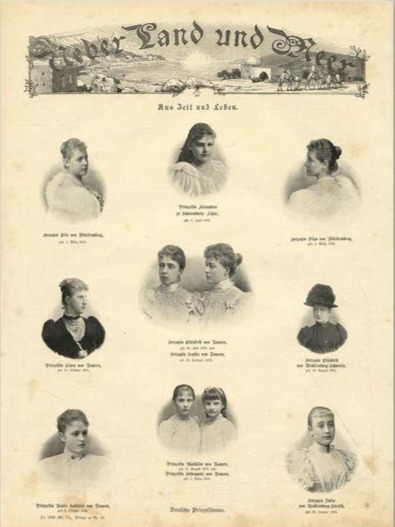
Back row: Duchess Elsa of Württemberg, Princess Alexandra of Schaumburg-Lippe and Duchess Olga of Württemberg.
Back row: Duchess Elsa of Württemberg, Princess Alexandra of Schaumburg-Lippe and Duchess Olga of Württemberg.
Middle row: Princess Clara of Bavaria, Duchesses Sophia Adelheid and Elisabeth in Bavaria, and Duchess Elisabeth Alexandrine of Mecklenburg-Schwerin.
Front row: Duchess Marie Gabrielle in Bavaria, Princesses Mathilde and Hildegarde of Bavaria and Duchess Jutta of Mecklenburg-Strelitz.
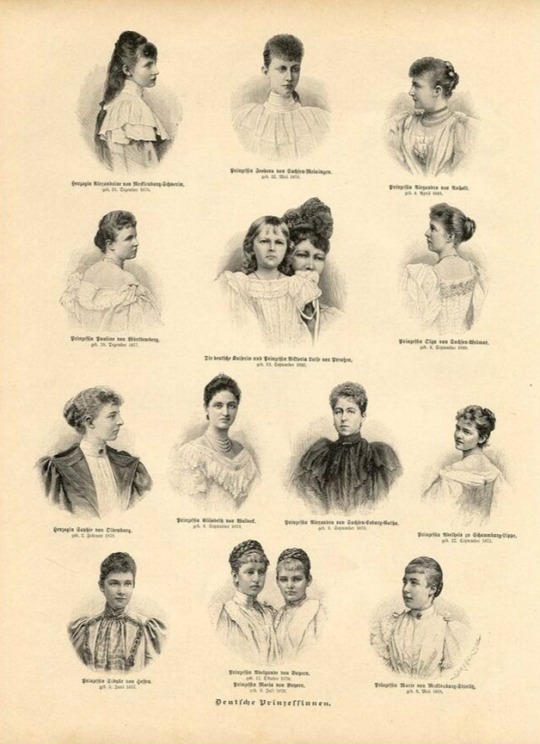
Back row: Duchess Alexandrine of Mecklenburg-Schwerin, Princess Feodora of Saxe-Meiningen and Princess Alexandra of Anhalt.
Middle row (1) Princess Pauline of Württemberg, German Empress Augusta Victoria with her daughter, Princess Victoria Louise of Prussia and Princess Olga of Saxe-Weimar-Eisenach.
Middle row (2): Duchess Sophia Charlotte of Oldenburg, Princess Elisabeth of Waldeck and Pyrmont, Princess Alexandra of Saxe-Coburg and Gotha and Princess Adelaide of Schaumburg-Lippe.
Front row: Princess Sybille Marguerite of Hesse, Princesses Adelgunde and Maria Ludwiga of Bavaria, and Duchess Marie of Mecklenburg-Strelitz.
#duchess olga of württemberg#duchess elsa of württemberg#duchess jutta of mecklenburg-strelitz#duchess marie of mecklenburg-strelitz#duchess alexandrine of mecklenburg-strelitz#duchess elisabeth alexandrine of mecklenburg-strelitz#duchess sophie adelheid in bavaria#duchess elisabeth in bavaria#duchess marie gabrielle in bavaria#princess adelgunde of bavaria#princess maria ludwiga of bavaria#princess clara of bavaria#princess mathilde of bavaria#princess hildegarde of bavaria#princess adelaide of schaumburg-lippe#princess alexandra of schaumburg-lippe#princess feodora of saxe-meiningen#princess olga of saxe-weimar-eisenach#princess victoria louise of prussia#princess alexandra of saxe-coburg and gotha#princess sybille marguerite of hesse#princess elisabeth of waldeck and pyrmont#duchess sophia charlotte of oldenburg#princess pauline of württemberg#german royalty#german royal#1895#1890s#german empress augusta victoria
37 notes
·
View notes
Photo
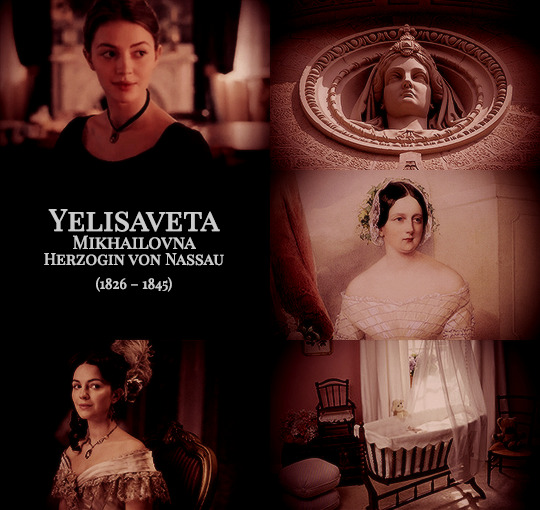

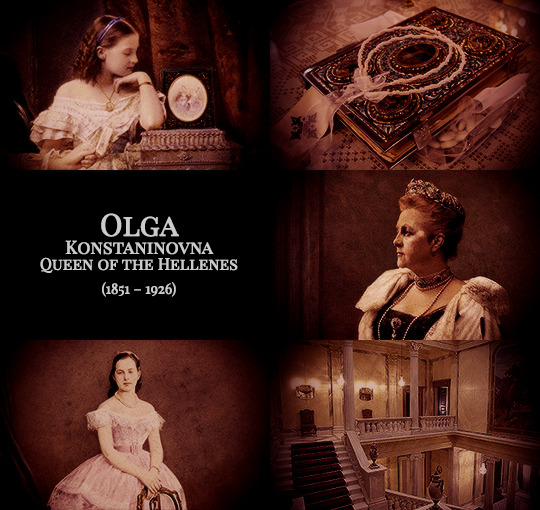
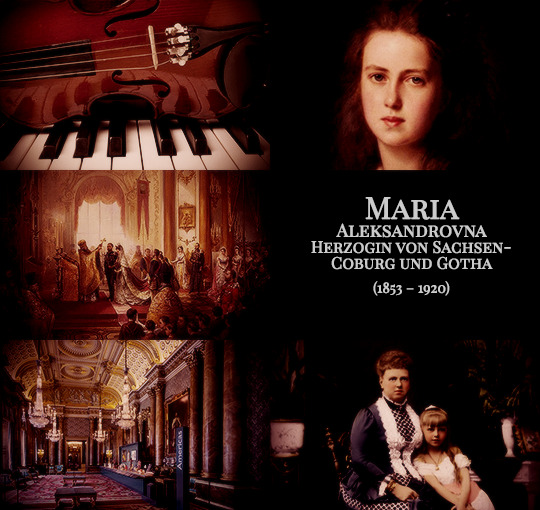
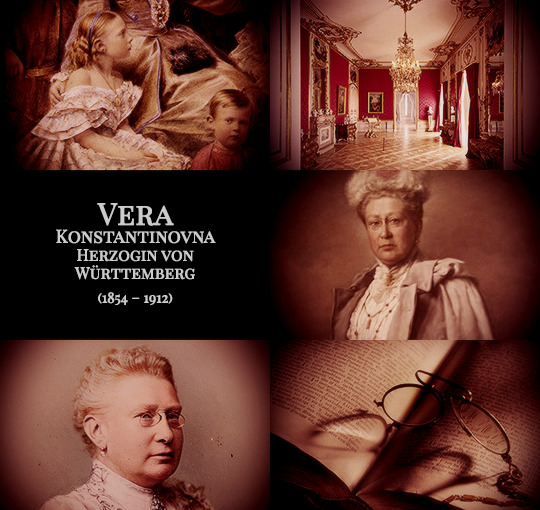
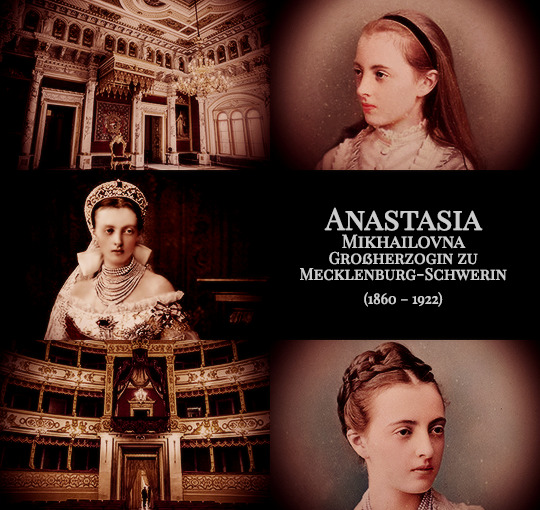
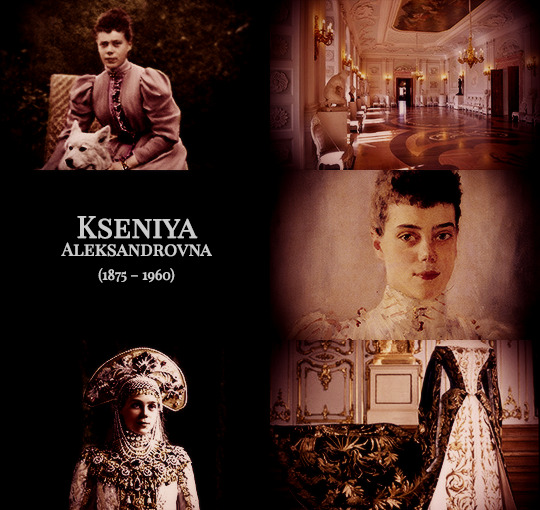
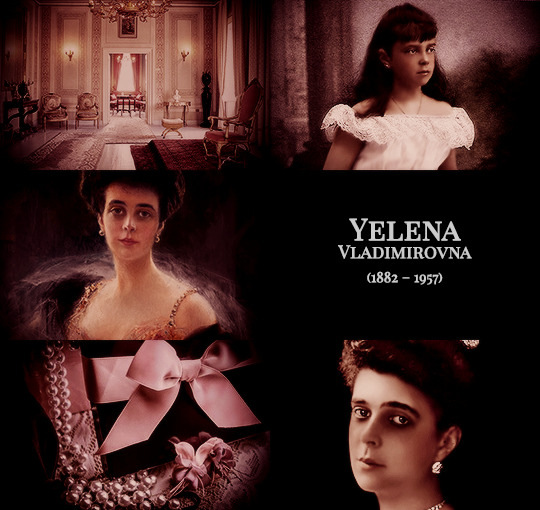
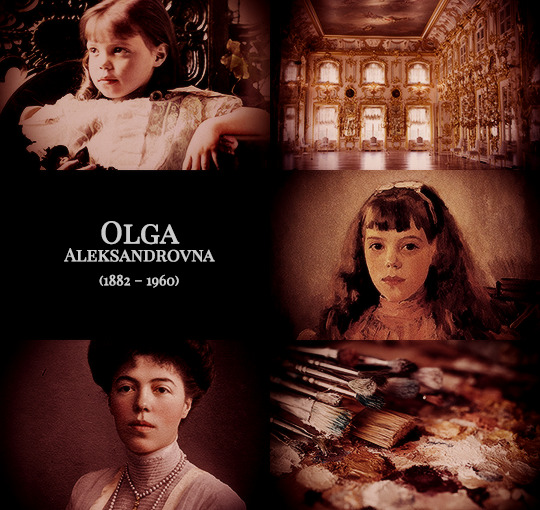
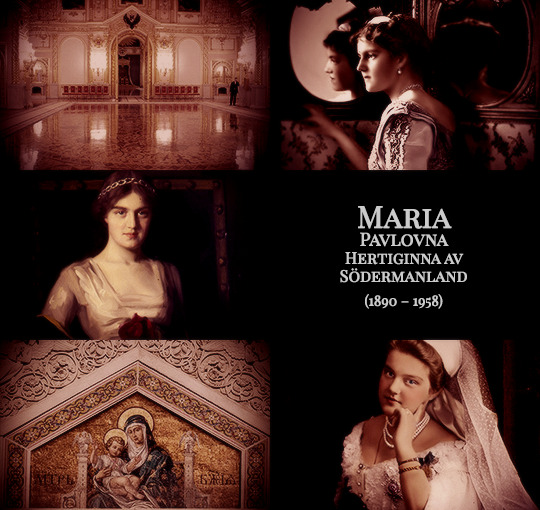
Women of the House of Romanov, part III
Grand Duchess Yelisaveta Mikhailovna. Daughter of Grand Duke Mikhail Pavlovich and Charlotte von Württemberg.
Grand Duchess Yekaterina Mikhailovna. Daughter of Grand Duke Mikhail Pavlovich and Charlotte von Württemberg. Mother of Helene zu Mecklenburg-Strelitz, Prinzessin von Sachsen-Altenburg
Grand Duchess Olga Konstaninovna. Daughter of Grand Duke Konstantin Nikolaevich and Alexandra von Sachsen-Altenburg. Mother of Alexandra of Greece and Denmark and Maria of Greece and Denmark.
Grand Duchess Maria Aleksandrovna. Daughter of Tsar Aleksandr II and Marie von Hessen und bei Rhein. Mother of Marie of Edinburgh, Queen of Romania; Victoria Melita of Saxe-Coburg and Gotha; and Beatrice of Saxe-Coburg and Gotha, infanta de España.
Grand Duchess Vera Konstantinovna. Daughter of Grand Duke Konstantin Nikolaevich and Alexandra von Sachsen-Altenburg. Mother of Elsa von Württemberg, Prinzessin zu Schaumburg-Lippe and Olga von Württemberg, Prinzessin zu Schaumburg-Lippe.
Grand Duchess Anastasia Mikhailovna. Daughter of Grand Duke Mikhail Nikolaevich and Cäcilie Auguste von Baden. Mother of Alexandrine zu Mecklenburg, Dronning af Danmark and Cecilie zu Mecklenburg, Kronprinzessin des deutschen Kaiserreichs.
Grand Duchess Kseniya Aleksandrovna. Daughter of Tsar Aleksandr III and Dagmar af Danmark. Mother of Princess Irina Aleksandrovna.
Grand Duchess Yelena Vladimirovna. Daughter of Grand Duke Vladimir Aleksandrovich and Marie zu Mecklenburg. Mother of Olga of Greece and Denmark; Elisávet of Greece and Denmark, Gräfin zu Toerring-Jettenbach; and Marina of Greece and Denmark, Duchess of Kent.
Grand Duchess Olga Aleksandrovna. Daughter of Tsar Aleksandr III and Dagmar af Danmark.
Grand Duchess Maria Pavlovna. Daughter of Grand Duke Pavel Aleksandrovich and Alexandra of Greece and Denmark.
#historyedit#house of romanov#russian history#european history#women's history#history#19th and early 20th#nanshe's graphics
86 notes
·
View notes
Photo

People that have marred in to Royal Families since 1800
Luxembourg
Princess Charlotte Luise Friederike Amalie Alexandrine of Saxe-Hildburghausen 28 January 1794 – 6 April 1825
Charlotte was a member of the House of Saxe-Hildburghausen and a Princess of Saxe-Hildburghausen (and later of Saxe-Altenburg) by birth. Through her marriage to William, Duke of Nassau, Louise was also a member of the House of Nassau-Weilburg and Duchess consort of Nassau. Louise was briefly Princess consort of Nassau-Weilburg in 1816.
Louise was the seventh child of Frederick, Duke of Saxe-Hildburghausen and his wife Duchess Charlotte Georgine of Mecklenburg-Strelitz. One of her godparents were her aunt, Louise of Mecklenburg-Strelitz, Queen consort of Kingdom of Prussia. Louise and her sister Therese were considered very beautiful, and were the subject of the Friedrich Rückert poem “Mit drei Moosrosen."
In 1809, Ludwig, Crown Prince of Bavaria visited Schloss Hildburghausen to choose his bride. Ludwig chose between Louise and Therese and finally selected Therese. Louise married William, Duke of Nassau, eldest son of Frederick William, Prince of Nassau-Weilburg and his wife Burgravine Louise Isabelle of Kirchberg, on 24 June 1813 in Weilburg.
To honor the occasion of their marriage, the Civil Guard of Weilberg and Samuel Luja composed the "Cantate am Feste der Heimführung des Erbprinzen Wilhelm von Nassau mit der Prinzessin Louise von Sachsen-Hildburghausen
The couple went on to have eight children.
The marriage was an unhappy one. Louise's husband was not only autocratic in politics, but also with regard to his family circle and bullied his wife and children. Louise died in 1825 shortly after the birth of her youngest daughter, Marie. Following her death, Louise's husband married her sister Charlotte's daughter Princess Pauline of Württemberg
The Luisenplatz and Luisenstraße in Wiesbaden are named for Louise.
1 note
·
View note
Text
Royal women plagued by scandals...
1. Sophia Dorothea of Celle.
2. Sophie of Anhalt-Zerbst
3. Princess Carolina Matilda of Great Britain.
4. Princess Caroline of Brunswick.
5. Princess Juliane of Saxe-Coburg-Saalfeld.
6. Marie Louise, Duchess of Parma.
7. Maria Christina of the Two Sicilies.
8. Queen Isabella II of Spain.
9. Princess Louise of Belgium.
10. Grand Duchess Anastasia Mikhailovna.
11. Duchess Elisabeth Alexandrine of Mecklenburg-Schwerin.
12. Archduchess Louise of Austria.
13. Princess Marie of Edinburgh.
14. Duchess Marie of Mecklenburg-Strelitz.
15. Princess Marie Adelheid of Lippe.
I have to read more about royalty...
14 notes
·
View notes